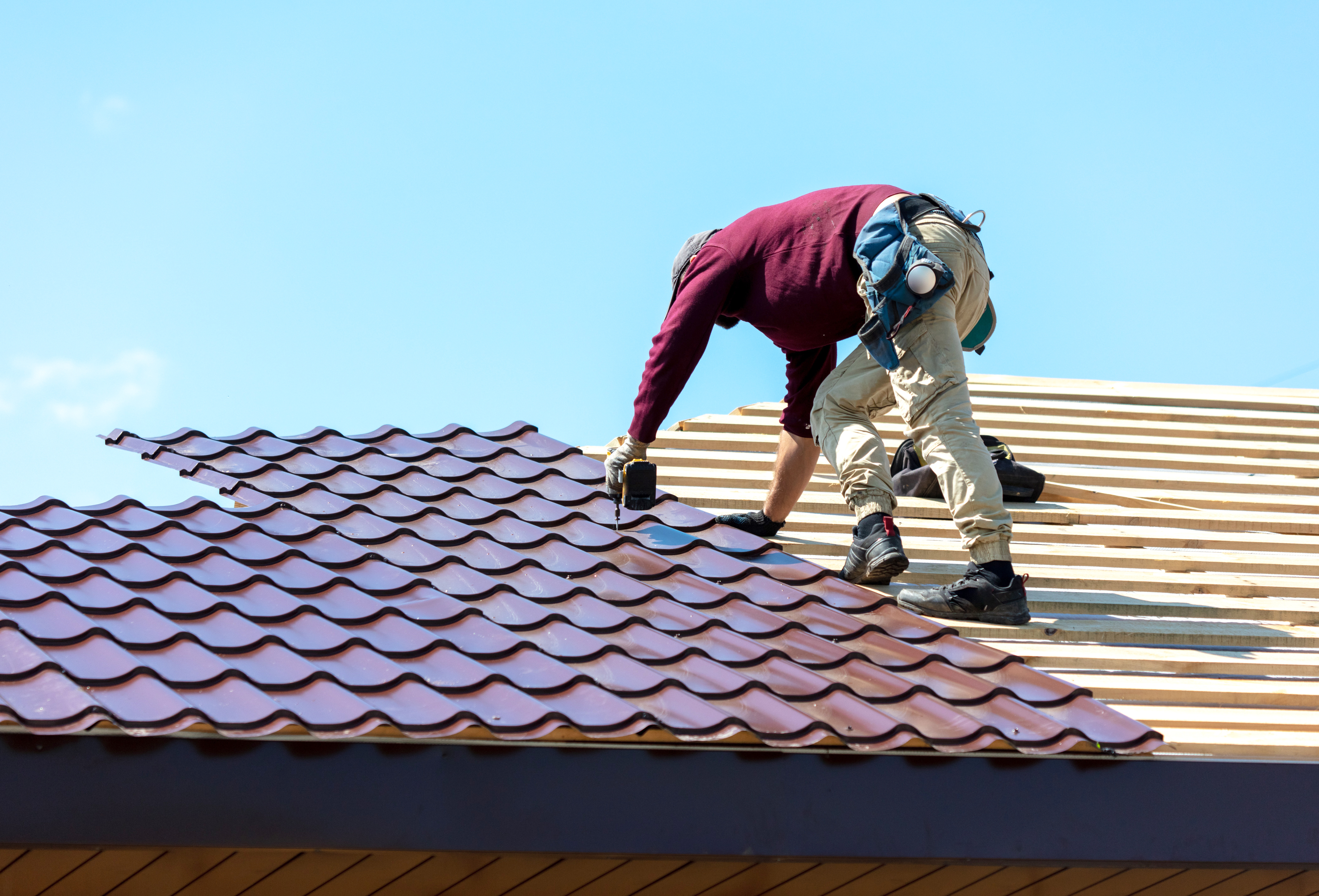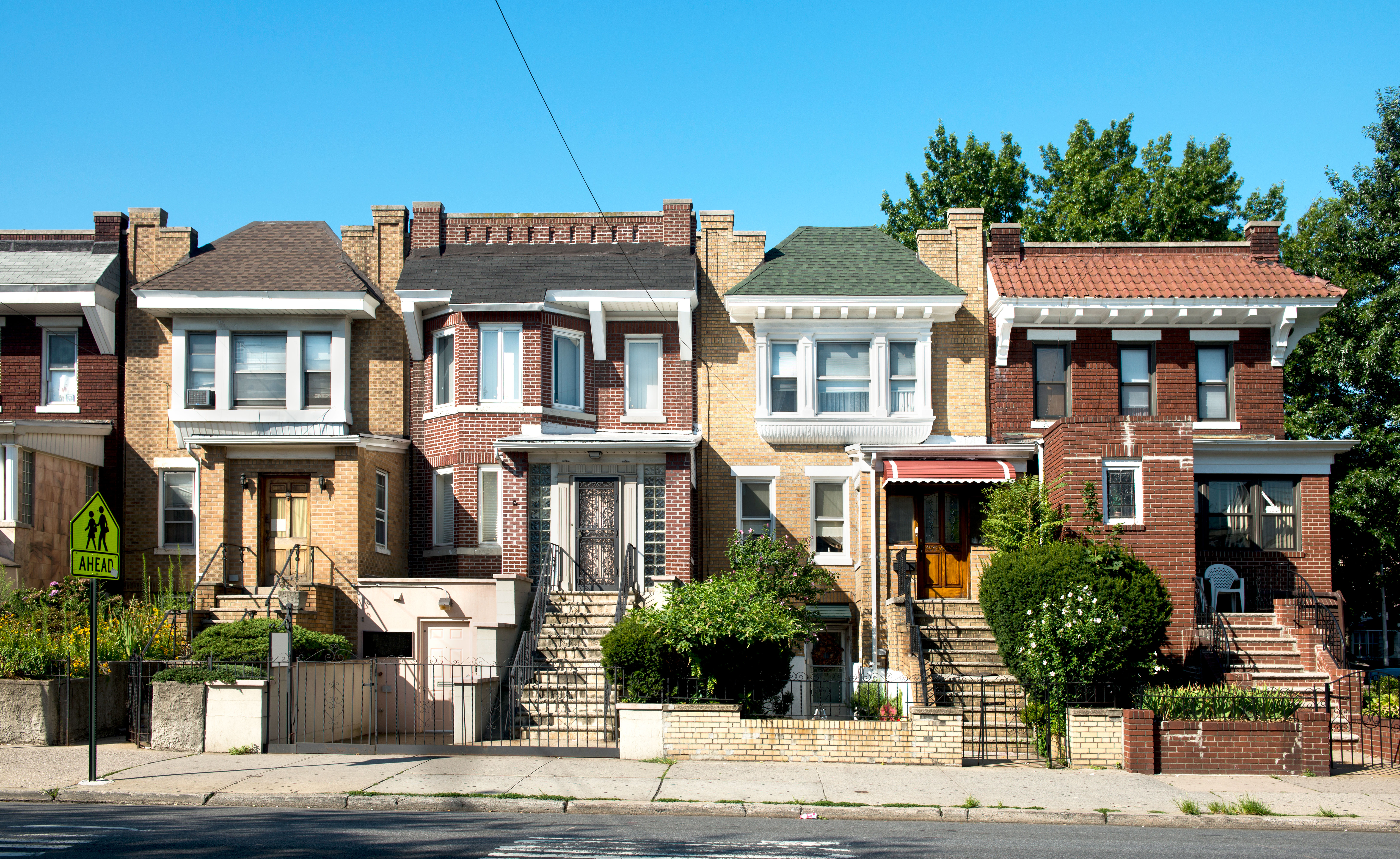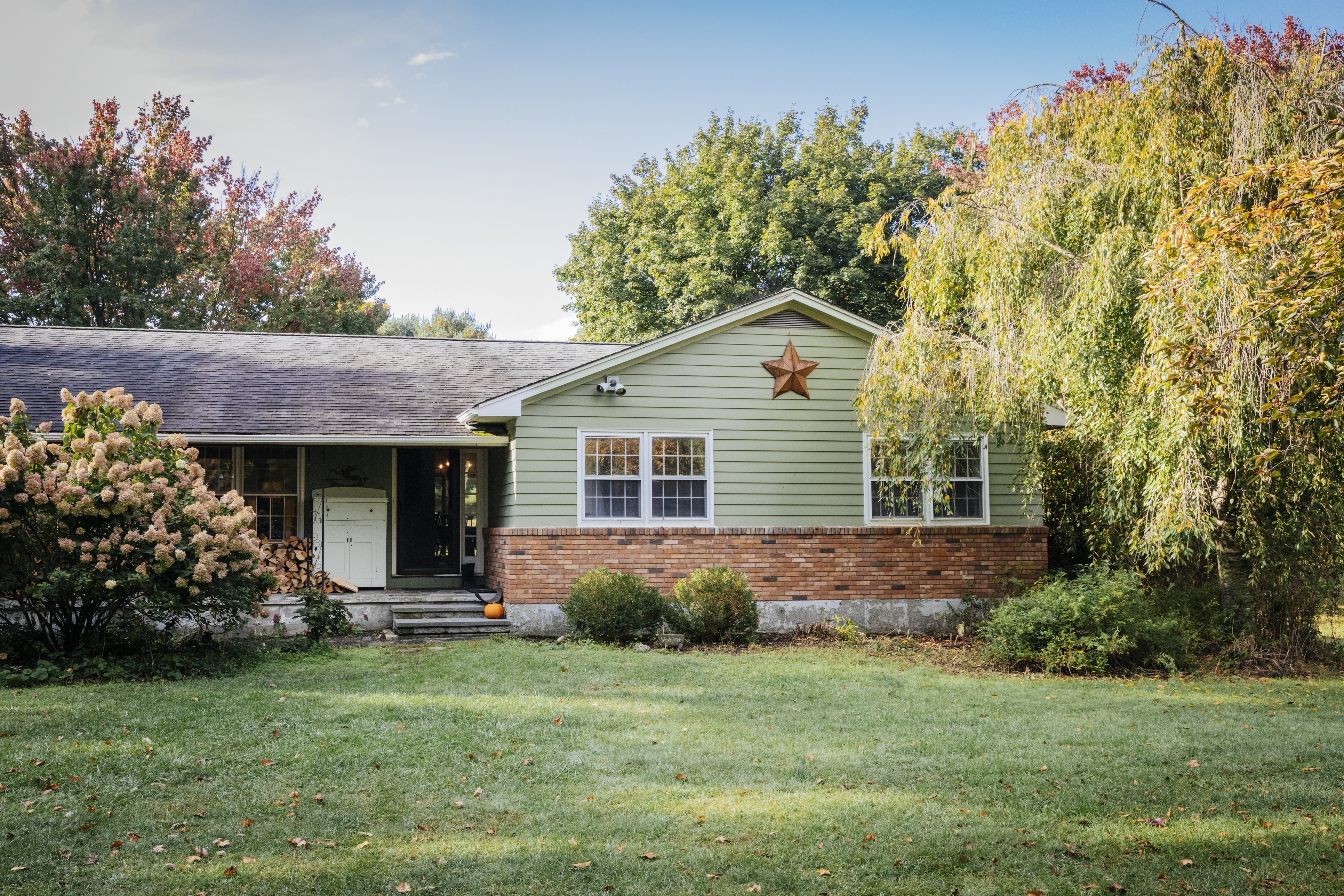
Need a new roof in the city that never sleeps? Learn about metal roof costs in New York to see if this durable roofing material is within your budget.
Roof framing costs $17,200 on average, or between $13,000 and $22,200, depending on the roof's size and steepness.


Roof size is the top cost factor—roof framing costs $8.60 per square foot, on average.
Framing type is another factor: Stick framing costs $6.50 to $8.90 per square foot, compared to $7.15 to $11.10 per square foot for truss framing.
Truss costs vary by type, ranging from $60 to $800 per truss.
Expect labor to account for 40% to 60% of the project cost.
Factor in an additional $100 to $200 for permits
If you’re framing a 2,000-square-foot roof new roof, you can expect installation prices of around $17,200, with costs commonly ranging from $13,000 to $22,200 or more. Estimating roof framing costs depends on numerous factors. After all, roofs come in seemingly endless shapes, sizes, designs, and materials. Here are the variables and considerations that will determine the cost of framing your new roof.
Whether for new construction, remodeling, adding a garage, or upgrading your home, the cost of roof framing is highly variable, depending on many factors. Cost factors include the project size, materials, roof design, the length of the rafters, and framing styles.
The size of the new roof is the most significant variable when pricing the framework for a new roof. Size, coupled with the project's scope, is also a major factor for roof framing repair work.
While the average home roof measures roughly 2,000 square feet, roofs vary in size from single-car garage-sized to large, whole-home structures. Because of that, it's easier to think of roof framing costs per square foot instead of as a whole.
Roof framing costs often range from $6.50 to $11.10 per square foot, with an average of $8.60 per square foot, including materials and labor.
| Roof Size in Square Feet | Average Price Range |
|---|---|
| 1,000 | $6,500–$11,100 |
| 1,300 | $8,450–$14,430 |
| 1,700 | $11,050–$18,870 |
| 2,000 | $13,000–$22,200 |
| 2,500 | $16,250–$27,750 |
| 3,000 | $16,500–$33,300 |
| 2-car garage | $2,900–$$4,900 |
While technically different, roof pitch and slope are interchangeable terms for practicality. Both refer to the steepness of the roof. The pitch of your new roof will be a cost factor, along with the project size. For one, steeper roofs require more material to construct. For another, the labor for particularly steep roofs can be somewhat more challenging and require more time to complete.
These factors combined mean that roofs with steep pitches are more costly to build than those with lower slopes—to a point. If a roof design is very shallow, nearing a flat-roof situation, prices can also be higher than roofs with more traditional slopes due to the need for additional material.
Roofs with very shallow and very steep pitches will cost closer to the high end of the average range, while roofs with pitch ratios of between 3:12 and 6:12 will have lower to more middle-of-the-road pricing.
There are two primary methods builders can use to frame a roof. The first, more traditional and cost-effective method, is stick framing. This method involves building the roof on-site, one board at a time. Framers may install a ridge board and build rafters off it or build custom roof trusses by hand.
The second, and stronger but less cost-efficient, way to build a roof is to use pre-manufactured roof trusses. Roof trusses are framing structures built off-site in a manufacturing plant and come to the site on a truck with all the roof framing parts intact, ready for installation. It's the closest thing to an on-site, instant roof for home construction.
Roof-truss construction is the most common method in new homes, despite the higher cost, because installing a truss-roof system takes less time and fewer laborers. Expect costs to average between 10% and 20% higher for a truss-framed roof than a stick-built one.
| Framing Type | Average Cost Per Square Foot |
|---|---|
| Stick Framing | $6.50–$8.90 |
| Truss Framing | $7.15–$11.10 |

Basic roof structures, such as simple gables on a home or garage, are the least costly to construct. Framers can build these basic roof types using stick framing rafters or pre-manufactured trusses. Regardless of the method, simple construction costs less than more complex roofs with multiple dormers, skylights, penetrations, varying slopes, and other features.
Because more complex roof systems typically require more materials and labor, they cost toward the higher end of the spectrum, while very simple roof construction will cost nearer the bottom of the scale.
There are multiple types of roof trusses available. Average roof-truss prices vary based on factors such as materials, size, and design. The cost variables all play a role in the total cost of your roof-framing project.
| Truss Type | Material Price Range per Truss |
|---|---|
| Standard | $60–$500 |
| Gable | $80–$800 |
| Attic | $100–$400 |
| Scissor | $120–$500 |
| Fink | $120–$260 |
| Mono | $60–$450 |
| Metal | $150–$700 |
If you're calculating roof framing costs as part of a major home remodel, there may be demolition work that must take place before a new roof can be installed. Construction demolition costs range from $50 to $75 per hour per laborer. The cost effect demolition will have on the price of your new roof will depend on how much of the existing structure will have to go away before the new construction.
Labor cost is a significant aspect of roof framing, and its price depends to some degree on the specifics of most other cost factors. One of several tips when hiring your roofing contractor is to ask about the project's timeline. This insight can supply a clue as to how much the labor cost might be. Labor costs are around half of the cost of an entire roof framing project but can vary from around 40% to 60%.
Where your home rests can affect roof-framing prices. Roof framing labor is often less costly in rural areas than in suburban areas or within busy cities. Additionally, rural locations are less prone to facing high-demand pricing.
Framing a roof requires a building permit. Construction permit costs vary widely by location, from around $100 to $2,000 or more, depending on the project's scope. However, for remodeling or building projects that involve new roof construction, the cost of the remodeling permit will include the roof.
Once your roof is framed, expect some ongoing costs to keep your new roof in good condition. Maintenance, repairs, and regular inspections are all necessary investments to ensure your new roof keeps you and your home protected for decades to come.
Keeping your roof truss in good shape requires minimal but regular maintenance. Several times a year, check the following:
Look for leaks and signs of moisture damage, which can cause the truss structure to degrade.
Check that ventilation is working properly and is unobstructed. Clear out vents as needed to keep airflow circulating.
Monitor joints and bolted connections to ensure there’s no bowing, splits, or unsecured hardware that could indicate a shifting truss.
Any structural problems with your roof truss should be repaired immediately to prevent further damage. Truss repairs can cost between $500 and $4,000, depending on the extent of the damage and whether the truss needs to be repaired or partially replaced. For safety’s sake, contact a roof repair pro at the first sign of damage.
Regular roof inspections can alert you to problems with your truss before they develop into something worse. Roof inspections average between $125 and $350, and should be conducted annually as part of your regular home maintenance.
Framing a new roof on any structure is already a big task. However, while your home will have contractors on site, it's also a good time to consider some of these common project add-ons.
Home framing: $18,500–$27,500
Remodeling framing: $7–$16 per square foot
Skylight installation: $1,000–$2,755
Fireplace installation: $945–$4,175
Chimney repair: $160–$750
Attic-fan installation: $370–$915
Attic insulation installation:$1,700–$2,100
It's true that framing your own roof would save money over hiring a roofer, at least at first. However, that's simply not an option for most homeowners. There are some ways to save money on a roof framing project, though, that don't require putting your safety in jeopardy.
Some roofing contractors may negotiate a lower project price if you offer to perform some less-demanding parts of the job yourself. Some demolition tasks, cleanup work, and other small chores may be possible to save a few hundred dollars.
Ask your framing contractor for any seasonal or other discounts that may apply to your situation.
Obtain at least three quotes from various contractors before starting your project. Compare quotes based on both price and provided services. Avoid choosing a quote with an extremely low price as it's not likely the deal it appears to be.
Hiring a local framing professional will cost you about 40% to 60% of the total project cost, but it’s a small price to pay to ensure the safety and longevity of your roof. These professionals ensure the roof is safely supported, compliant with building codes, and covered by work guarantees, all of which give homeowners much-needed peace of mind. Your roof protects your most valuable asset—your home—so investing in professionals for this job is the right call.
Working with a roof framing pro offers countless benefits to your project, such as:
Access to premium roofing materials and add-ons
Ensuring safe installation of all roof framing and structural supports
Avoiding injuries related to working on a roof without the right safety knowledge
Getting your roof framing project completed much more quickly
Access to guarantees and insurance in case of a roof issue later on
Savings on utility bills thanks to higher-quality roof installation
Make sure you know exactly how big your roof framing project will be to ensure accurate quotes and costs.
Ask your pro about stick frames and truss frames to determine which option is better for your needs and budget.
Ask for recommendations on truss types to balance functionality, aesthetics, and cost.
Ask your professional what you can expect to pay for the permits they’ll acquire on your behalf.
Don’t forget to account for ongoing maintenance and repair costs to ensure the structural integrity of your roof framing.
Home is the most important place on earth, which is why Angi has helped more than 150 million homeowners transform their houses into homes they adore. To help homeowners with their next project, Angi provides readers with the most accurate cost data and upholds strict editorial standards. We extensively research project costs to develop the pricing data you see, so you can make the best decisions for you and your home. We rely on reputable sources, including the U.S. Bureau of Labor Statistics, academic journals, market studies, and interviews with industry experts—all to ensure our prices reflect real-world projects.
Want to help us improve our cost data? Send us a recent project quote to [email protected]. Quotes and personal information will not be shared publicly.
From average costs to expert advice, get all the answers you need to get your job done.

Need a new roof in the city that never sleeps? Learn about metal roof costs in New York to see if this durable roofing material is within your budget.

Learn about average roof repair costs in New York City and what factors can affect your total to set your budget appropriately.

A new roof boosts curb appeal and home value and keeps your property protected. Learn about roof replacement costs in New York City to budget accurately.

A leaky roof is less than ideal. Learn how to patch a roof while you wait for repairs from the pros to prevent further damage to your home.

Do roof vents work? Is roof ventilation necessary? Can I have too much ventilation? Here are the top 11 myths about roof vents and the real answers you deserve.

If you’re wondering what a roof truss is, learn about them in this guide, including durability, cost-effectiveness, and what makes them different from roof rafters.